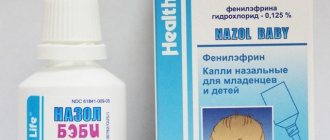November 09, 2018
Averyanova Sveta
Typical signs of chickenpox in children are difficult to miss; even inexperienced parents know what a sick baby looks like.
Small red rashes form on the child's skin, he becomes weak and lethargic, and refuses to eat. The baby begins to develop a fever, the thermometer readings vary from 37 to 39.5 degrees.
In rare cases, chickenpox occurs without fever in children. If the skin rashes are minor, adults may not even realize that the baby has encountered an insidious virus for the first time.
Can chickenpox occur without fever?
The course of this disease with the absence of characteristic symptoms occurs in the following categories of patients:
- Children who do not have problems with the immune system or pathologies. Such children, especially those who were breastfed, experience a mild form of the disease.
- Children and adults who have been vaccinated against the virus.
- Persons who received an injection of immunoglobulin shortly before or shortly after infection.
Chickenpox without fever and almost without rash in these cases is explained by the high concentration of antibodies in the blood of patients.
Prevention
A person who has chickenpox develops acquired immunity, which remains normal for life.
Vaccination can be used for prevention in children who have not been ill. The Oka virus strain has been well studied and widely used. But among clinicians the attitude towards mass vaccination is ambiguous, which is primarily caused by the cost of the project.
Preventive measures also include quarantine. Chickenpox has a long incubation period of 21 days, so quarantine for contact children is introduced for 3 weeks.
Recently, cases of recurrent chickenpox have begun to occur. They are called breakthrough chickenpox. Most often, such cases are associated with disturbances in the child’s immune system.
As can be seen from the above, chickenpox is not just a rash and fever in childhood. This is a disease that requires a qualified approach to treatment and observation.
For more information about the symptoms of chickenpox and its treatment, watch the video:
This article has been verified by a current qualified physician, Victoria Druzhikina, and can be considered a reliable source of information for site users.
Mild symptoms
Chickenpox can occur in three forms:
Lightweight
With strong immunity, the temperature during chickenpox can increase slightly: up to 37–37.5 degrees, rashes are also rare, characterized by the fact that there is no second and third wave. As a rule, the child, although posing a danger to others, recovers quickly.
Moderate
With this degree of the disease, the rashes come in waves, one after another, the thermometer readings range from 38 to 39.5.
The temperature lasts for three days on average. Young patients are capricious and have trouble sleeping. One of the symptoms is severe headache and painful sensations in the muscles, especially at the beginning of the disease.
Heavy
This form is characterized by high, up to 40 degrees, temperature for 7–9 days, headaches, vomiting, and severe weakness. Inflamed tubercles - papules - cover not only the skin, but also the mucous membranes of the mouth, genitals and eyes.
In the early period, a mild form of chickenpox in children is similar to ARVI: runny nose, sore throat, weakness. The reddened spots that appear on the skin resemble insect bites; if there are few of them, they usually do not cause concern.
Chickenpox in mild form is also characterized by a short duration of all stages of the disease:
- incubation,
- prodromal,
- appearance and disappearance of rashes.
The shorter the incubation period, the easier it is to tolerate chickenpox, since the virus has not spread significantly.
During the prodromal period, there is a slight rise in temperature, often closer to the night, which parents may not notice, since the fever subsides by morning.
There is no severe itching, which small patients experience with moderate and severe infection.
Rashes appear during the first day, then the blisters burst, dry out and disappear within a week, maximum two. The next day after the appearance of redness, new tubercles do not appear in a mild form.
Advice. Parents asking whether chickenpox occurs without symptoms and whether they might have missed it in their baby are advised to do an enzyme-linked immunosorbent test.
It will show whether there are antibodies to the virus or not.
Temperature with chickenpox
array ( 'ID' => '8619', '~ID' => '8619', 'NAME' => 'Chickenpox temperature', '~NAME' => 'Chickenpox temperature', 'IBLOCK_ID' => ' 43', '~IBLOCK_ID' => '43', 'IBLOCK_SECTION_ID' => '1186', '~IBLOCK_SECTION_ID' => '1186', 'DETAIL_TEXT' => ' Chickenpox is an infectious disease transmitted by the Varicella Zoster virus by airborne droplets by. Is there a temperature with chickenpox?
The answer to this question is positive.
The temperature during rashes with chickenpox
depends on the severity of the disease. Experts distinguish three forms of chickenpox: mild, moderate, severe. The mild form is characterized by an increase in temperature of no more than 37 - 37, 5 degrees. However, most often children under 12 years of age suffer from moderate chickenpox. In this case, the temperature can rise to 38.5 degrees for at least four days. In severe chickenpox, the temperature can rise to 40 degrees and last for a week.
The temperature with chickenpox in children
usually appears simultaneously with the rash, but if the form of the disease is severe, then an increase in temperature may occur before the onset of the rash.
How many days does the fever last for chickenpox?
With a mild form of chickenpox, the temperature lasts from one to three days, depending on the amount of the rash.
For moderate chickenpox - four days. In severe cases – a week. It should be noted that an increase in temperature during the period of illness can occur several times: each time along with a new wave of rashes. A high temperature with chickenpox
is typical for adults and adolescents who experience hormonal changes in the body; accordingly, the immune system is weakened, and it is more difficult for the body to fight the infection.
Is it necessary to lower the temperature during chickenpox?
If the temperature does not exceed 38 degrees, then there is no need to bring it down, because
this increase in temperature is a natural reaction indicating that the body is fighting the virus. How to reduce high fever?
If the temperature rises above 38 degrees, then a doctor should recommend medicine to reduce it.
The drug is selected depending on the age, general condition of the patient, tendency to allergic reactions, etc. Most often, your doctor may recommend paracetamol or ibuprofen. Paracetamol is prescribed to children older than one month. It is safer, but begins to work in about an hour and lowers the temperature for more than 4 hours. Ibuprofen has an antipyretic and anti-inflammatory effect and lasts up to 8 hours. But it has contraindications and is allowed for children from three months. If you have chickenpox at a fever, what should you do?
If after taking an antipyretic the temperature remains high, and the general condition of the body leaves much to be desired;
If the temperature lasts for more than a week, or rises again after being normal for several days, you should consult a doctor. Is it possible to walk with chickenpox without fever?
During the acute period of illness, the child should be isolated as much as possible, because
at this time the disease is very contagious. But after the rashes stop and the patient’s condition returns to normal, after five days you can go for a walk. But there are exceptions to the rules: at normal temperatures, good weather, and if a person lives in a private house where there is a separate courtyard, then you can go for a walk, while avoiding close contact with other people. ', '~DETAIL_TEXT' => ' Chickenpox is an infectious disease transmitted by the Varicella Zoster virus by airborne droplets. Is there a fever with chickenpox?
The answer to this question is yes.
The temperature of chickenpox rashes
depends on the severity of the disease.
Experts distinguish three forms of chickenpox: mild, moderate, and severe. A mild form is characterized by an increase in temperature of no more than 37 - 37.5 degrees. However, most often children under 12 years of age suffer from moderate chickenpox. In this case, the temperature may rise to 38.5 degrees for at least four days. In severe cases of chickenpox, the temperature can rise to 40 degrees and last for a week. The temperature with chickenpox in children
usually appears simultaneously with the rash, but if the form of the disease is severe, then an increase in temperature may occur before the onset of the rash.
How many days does the fever last for chickenpox?
With a mild form of chickenpox, the temperature lasts from one to three days, depending on the amount of the rash.
For moderate chickenpox - four days. In severe cases – a week. It should be noted that an increase in temperature during the period of illness can occur several times: each time along with a new wave of rashes. A high temperature with chickenpox
is typical for adults and adolescents who experience hormonal changes in the body; accordingly, the immune system is weakened, and it is more difficult for the body to fight the infection.
Is it necessary to lower the temperature during chickenpox?
If the temperature does not exceed 38 degrees, then there is no need to bring it down, because
this increase in temperature is a natural reaction indicating that the body is fighting the virus. How to reduce high fever?
If the temperature rises above 38 degrees, then a doctor should recommend medicine to reduce it.
The drug is selected depending on the age, general condition of the patient, tendency to allergic reactions, etc. Most often, your doctor may recommend paracetamol or ibuprofen. Paracetamol is prescribed to children older than one month. It is safer, but begins to work in about an hour and lowers the temperature for more than 4 hours. Ibuprofen has an antipyretic and anti-inflammatory effect and lasts up to 8 hours. But it has contraindications and is allowed for children from three months. If you have chickenpox at a fever, what should you do?
If after taking an antipyretic the temperature remains high, and the general condition of the body leaves much to be desired;
If the temperature lasts for more than a week, or rises again after being normal for several days, you should consult a doctor. Is it possible to walk with chickenpox without fever? During the acute period of illness, the child should be isolated as much as possible, because at this time the disease is very contagious. But after the rashes stop and the patient’s condition returns to normal, after five days you can go for a walk. But there are exceptions to the rules: at normal temperatures, good weather, and if a person lives in a private house where there is a separate courtyard, then you can go for a walk, while avoiding close contact with other people. ', 'DETAIL_TEXT_TYPE' => 'html', '~DETAIL_TEXT_TYPE' => 'html', 'PREVIEW_TEXT' => ' Chickenpox is an infectious disease transmitted by the Varicella Zoster virus by airborne droplets. Is there a fever with chickenpox? The answer to this question is yes. The temperature during chickenpox rashes depends on the severity of the disease.', '~PREVIEW_TEXT' => ' Chickenpox is an infectious disease transmitted by the Varicella Zoster virus by airborne droplets. Is there a fever with chickenpox? The answer to this question is yes. The temperature of chickenpox rashes depends on the severity of the disease.', 'PREVIEW_TEXT_TYPE' => 'text', '~PREVIEW_TEXT_TYPE' => 'text', 'DETAIL_PICTURE' => NULL, '~DETAIL_PICTURE' => NULL, 'TIMESTAMP_X' => '24.06.2018 17:15', '~TIMESTAMP_X' => '24.06.2018 17:15', 'ACTIVE_FROM' => NULL, '~ACTIVE_FROM' => NULL, 'LIST_PAGE_URL' => '/forpatients/ school/info/', '~LIST_PAGE_URL' => '/forpatients/school/info/', 'DETAIL_PAGE_URL' => '/forpatients/school/info/vetryanaya-ospa/temperatura-pri-vetryanke/', '~DETAIL_PAGE_URL ' => '/forpatients/school/info/vetryanaya-ospa/temperatura-pri-vetryanke/', 'LANG_DIR' => '/', '~LANG_DIR' => '/', 'CODE' => 'temperatura- pri-vetryanke', '~CODE' => 'temperatura-pri-vetryanke', 'EXTERNAL_ID' => '8619', '~EXTERNAL_ID' => '8619', 'IBLOCK_TYPE_ID' => 'SERVICE', '~IBLOCK_TYPE_ID ' => 'SERVICE', 'IBLOCK_CODE' => ", '~IBLOCK_CODE' => ", 'IBLOCK_EXTERNAL_ID' => ", '~IBLOCK_EXTERNAL_ID' => ", 'LID' => 's1', '~LID' => 's1', 'NAV_RESULT' => false, 'DISPLAY_ACTIVE_FROM' => ", 'IPROPERTY_VALUES' => array ( 'SECTION_META_TITLE' => 'Chickenpox temperature', ), 'FIELDS' => array ( ), ' PROPERTIES' => array ( 'IMAGES' => array ( 'ID' => '240', 'TIMESTAMP_X' => '2017-11-15 09:11:27', 'IBLOCK_ID' => '43', ' NAME' => 'Photo gallery', 'ACTIVE' => 'Y', 'SORT' => '500', 'CODE' => 'IMAGES', 'DEFAULT_VALUE' => ", 'PROPERTY_TYPE' => 'F' , 'ROW_COUNT' => '1', 'COL_COUNT' => '30', 'LIST_TYPE' => 'L', 'MULTIPLE' => 'Y', 'XML_ID' => ", 'FILE_TYPE' => ' jpg, gif, bmp, png, jpeg', 'MULTIPLE_CNT' => '5', 'TMP_ID' => NULL, 'LINK_IBLOCK_ID' => '0', 'WITH_DESCRIPTION' => 'Y', 'SEARCHABLE' => 'N', 'FILTRABLE' => 'N', 'IS_REQUIRED' => 'N', 'VERSION' => '1', 'USER_TYPE' => NULL, 'USER_TYPE_SETTINGS' => NULL, 'HINT' => ", 'PROPERTY_VALUE_ID' => false, 'VALUE' => false, 'DESCRIPTION' => false, 'VALUE_ENUM' => NULL, 'VALUE_XML_ID' => NULL, 'VALUE_SORT' => NULL, '~VALUE' => false, '~DESCRIPTION' => false, '~NAME' => 'Photo gallery', '~DEFAULT_VALUE' => "), 'BLOCK_EXP' => array ( 'ID' => '241', 'TIMESTAMP_X' = > '2017-11-15 09:11:27', 'IBLOCK_ID' => '43', 'NAME' => 'Sharing experience', 'ACTIVE' => 'Y', 'SORT' => '500' , 'CODE' => 'BLOCK_EXP', 'DEFAULT_VALUE' => array ( 'TYPE' => 'HTML', 'TEXT' => ", 'PROPERTY_TYPE' => 'S', 'ROW_COUNT' => ' 1', 'COL_COUNT' => '30', 'LIST_TYPE' => 'L', 'MULTIPLE' => 'N', 'XML_ID' => ", 'FILE_TYPE' => ", 'MULTIPLE_CNT' => ' 5', 'TMP_ID' => NULL, 'LINK_IBLOCK_ID' => '0', 'WITH_DESCRIPTION' => 'N', 'SEARCHABLE' => 'N', 'FILTRABLE' => 'N', 'IS_REQUIRED' = > 'N', 'VERSION' => '1', 'USER_TYPE' => 'HTML', 'USER_TYPE_SETTINGS' => array ( 'height' => 400, ), 'HINT' => ", 'PROPERTY_VALUE_ID' = > NULL, 'VALUE' => ", 'DESCRIPTION' => ", 'VALUE_ENUM' => NULL, 'VALUE_XML_ID' => NULL, 'VALUE_SORT' => NULL, '~VALUE' => ", '~DESCRIPTION' => ", '~NAME' => 'Sharing experience', '~DEFAULT_VALUE' => array ( 'TYPE' => 'HTML', 'TEXT' => " ), ), 'BLOCK_VIDEO' => array ( 'ID' => '242', 'TIMESTAMP_X' => '2017-11-15 10:20:07', 'IBLOCK_ID' => '43', 'NAME' => 'Youtube Video', 'ACTIVE' = > 'Y', 'SORT' => '500', 'CODE' => 'BLOCK_VIDEO', 'DEFAULT_VALUE' => array ( 'TEXT' => ", 'TYPE' => 'HTML', ), 'PROPERTY_TYPE ' => 'S', 'ROW_COUNT' => '1', 'COL_COUNT' => '50', 'LIST_TYPE' => 'L', 'MULTIPLE' => 'N', 'XML_ID' => ", 'FILE_TYPE' => ", 'MULTIPLE_CNT' => '5', 'TMP_ID' => NULL, 'LINK_IBLOCK_ID' => '0', 'WITH_DESCRIPTION' => 'N', 'SEARCHABLE' => 'N', 'FILTRABLE' => 'N', 'IS_REQUIRED' => 'N', 'VERSION' => '1', 'USER_TYPE' => 'HTML', 'USER_TYPE_SETTINGS' => array ( 'height' => 200, ), 'HINT' => ", 'PROPERTY_VALUE_ID' => NULL, 'VALUE' => ", 'DESCRIPTION' => ", 'VALUE_ENUM' => NULL, 'VALUE_XML_ID' => NULL, 'VALUE_SORT' => NULL , '~VALUE' => ", '~DESCRIPTION' => ", '~NAME' => 'Youtube Video', '~DEFAULT_VALUE' => array ( 'TEXT' => ", 'TYPE' => 'HTML ', ), ), 'BLOCK_VIDEO_DESC' => array ( 'ID' => '243', 'TIMESTAMP_X' => '2017-11-15 09:11:27', 'IBLOCK_ID' => '43', ' NAME' => 'Video description', 'ACTIVE' => 'Y', 'SORT' => '500', 'CODE' => 'BLOCK_VIDEO_DESC', 'DEFAULT_VALUE' => array ( 'TYPE' => 'HTML ', 'TEXT' => "), 'PROPERTY_TYPE' => 'S', 'ROW_COUNT' => '1', 'COL_COUNT' => '30', 'LIST_TYPE' => 'L', 'MULTIPLE' => 'N', 'XML_ID' => ", 'FILE_TYPE' => ", 'MULTIPLE_CNT' => '5', 'TMP_ID' => NULL, 'LINK_IBLOCK_ID' => '0', 'WITH_DESCRIPTION' => 'N', 'SEARCHABLE' => 'N', 'FILTRABLE' => 'N', 'IS_REQUIRED' => 'N', 'VERSION' => '1', 'USER_TYPE' => 'HTML', ' USER_TYPE_SETTINGS' => array ( 'height' => 400, ), 'HINT' => ", 'PROPERTY_VALUE_ID' => NULL, 'VALUE' => ", 'DESCRIPTION' => ", 'VALUE_ENUM' => NULL, 'VALUE_XML_ID' => NULL, 'VALUE_SORT' => NULL, '~VALUE' => ", '~DESCRIPTION' => ", '~NAME' => 'Video description', '~DEFAULT_VALUE' => array ( ' TYPE' => 'HTML', 'TEXT' => ", ), 'BLOCK_TEXT_BOTTOM' => array ( 'ID' => '244', 'TIMESTAMP_X' => '2017-11-15 09:11: 27', 'IBLOCK_ID' => '43', 'NAME' => 'Text block at the bottom of the page', 'ACTIVE' => 'Y', 'SORT' => '500', 'CODE' => 'BLOCK_TEXT_BOTTOM' , 'DEFAULT_VALUE' => array ( 'TYPE' => 'HTML', 'TEXT' => "), 'PROPERTY_TYPE' => 'S', 'ROW_COUNT' => '1', 'COL_COUNT' => ' 30', 'LIST_TYPE' => 'L', 'MULTIPLE' => 'N', 'XML_ID' => ", 'FILE_TYPE' => ", 'MULTIPLE_CNT' => '5', 'TMP_ID' => NULL , 'LINK_IBLOCK_ID' => '0', 'WITH_DESCRIPTION' => 'N', 'SEARCHABLE' => 'N', 'FILTRABLE' => 'N', 'IS_REQUIRED' => 'N', 'VERSION' = > '1', 'USER_TYPE' => 'HTML', 'USER_TYPE_SETTINGS' => array ( 'height' => 400, ), 'HINT' => ", 'PROPERTY_VALUE_ID' => NULL, 'VALUE' => " , 'DESCRIPTION' => ", 'VALUE_ENUM' => NULL, 'VALUE_XML_ID' => NULL, 'VALUE_SORT' => NULL, '~VALUE' => ", '~DESCRIPTION' => ", '~NAME' = > 'Text block at the bottom of the page', '~DEFAULT_VALUE' => array ( 'TYPE' => 'HTML', 'TEXT' => ", ), 'AMP' => array ( 'ID' => '305 ', 'TIMESTAMP_X' => '2021-03-01 22:23:44', 'IBLOCK_ID' => '43', 'NAME' => 'AMP', 'ACTIVE' => 'Y', 'SORT' => '500', 'CODE' => 'AMP', 'DEFAULT_VALUE' => ", 'PROPERTY_TYPE' => 'S', 'ROW_COUNT' => '1', 'COL_COUNT' => '30', ' LIST_TYPE' => 'L', 'MULTIPLE' => 'N', 'XML_ID' => ", 'FILE_TYPE' => ", 'MULTIPLE_CNT' => '5', 'TMP_ID' => NULL, 'LINK_IBLOCK_ID' => '0', 'WITH_DESCRIPTION' => 'N', 'SEARCHABLE' => 'N', 'FILTRABLE' => 'N', 'IS_REQUIRED' => 'N', 'VERSION' => '1' , 'USER_TYPE' => NULL, 'USER_TYPE_SETTINGS' => NULL, 'HINT' => ", 'PROPERTY_VALUE_ID' => NULL, 'VALUE' => ", 'DESCRIPTION' => ", 'VALUE_ENUM' => NULL, 'VALUE_XML_ID' => NULL, 'VALUE_SORT' => NULL, '~VALUE' => ", '~DESCRIPTION' => ", '~NAME' => 'AMP', '~DEFAULT_VALUE' => "), ), 'DISPLAY_PROPERTIES' => array ( ), 'IBLOCK' => array ( 'ID' => '43', '~ID' => '43', 'TIMESTAMP_X' => '30.08.2021 09:02' , '~TIMESTAMP_X' => '30.08.2021 09:02', 'IBLOCK_TYPE_ID' => 'SERVICE', '~IBLOCK_TYPE_ID' => 'SERVICE', 'LID' => 's1', '~LID' => 's1', 'CODE' => ", '~CODE' => ", 'API_CODE' => NULL, '~API_CODE' => NULL, 'NAME' => 'Information for patients', '~NAME' = > 'Patient Information', 'ACTIVE' => 'Y', '~ACTIVE' => 'Y', 'SORT' => '500', '~SORT' => '500', 'LIST_PAGE_URL' => '/forpatients/school/info/', '~LIST_PAGE_URL' => '/forpatients/school/info/', 'DETAIL_PAGE_URL' => '#SITE_DIR#/forpatients/school/info/#SECTION_CODE_PATH#/#ELEMENT_CODE#/ ', '~DETAIL_PAGE_URL' => '#SITE_DIR#/forpatients/school/info/#SECTION_CODE_PATH#/#ELEMENT_CODE#/', 'SECTION_PAGE_URL' => '#SITE_DIR#/forpatients/school/info/#SECTION_CODE_PATH#/' , '~SECTION_PAGE_URL' => '#SITE_DIR#/forpatients/school/info/#SECTION_CODE_PATH#/', 'PICTURE' => NULL, '~PICTURE' => NULL, 'DESCRIPTION' => ", '~DESCRIPTION' => ", 'DESCRIPTION_TYPE' => 'text', '~DESCRIPTION_TYPE' => 'text', 'RSS_TTL' => '24', '~RSS_TTL' => '24', 'RSS_ACTIVE' => 'Y' , '~RSS_ACTIVE' => 'Y', 'RSS_FILE_ACTIVE' => 'N', '~RSS_FILE_ACTIVE' => 'N', 'RSS_FILE_LIMIT' => NULL, '~RSS_FILE_LIMIT' => NULL, 'RSS_FILE_DAYS' => NULL, '~RSS_FILE_DAYS' => NULL, 'RSS_YANDEX_ACTIVE' => 'N', '~RSS_YANDEX_ACTIVE' => 'N', 'XML_ID' => ", '~XML_ID' => ", 'TMP_ID' => ' f062711601b663ed550df001f4f2fb5c', '~TMP_ID' => 'f062711601b663ed550df001f4f2fb5c', 'INDEX_ELEMENT' => 'Y', '~INDEX_ELEMENT' => 'Y', 'INDEX_SECTION' => 'Y', '~INDEX_ SECTION' => 'Y' , 'WORKFLOW' => 'N', '~WORKFLOW' => 'N', 'BIZPROC' => 'N', '~BIZPROC' => 'N', 'SECTION_CHOOSER' => 'L', '~ SECTION_CHOOSER' => 'L', 'LIST_MODE' => ", '~LIST_MODE' => ", 'RIGHTS_MODE' => 'S', '~RIGHTS_MODE' => 'S', 'SECTION_PROPERTY' => 'N' , '~SECTION_PROPERTY' => 'N', 'PROPERTY_INDEX' => 'N', '~PROPERTY_INDEX' => 'N', 'VERSION' => '1', '~VERSION' => '1', ' LAST_CONV_ELEMENT' => '0', '~LAST_CONV_ELEMENT' => '0', 'SOCNET_GROUP_ID' => NULL, '~SOCNET_GROUP_ID' => NULL, 'EDIT_FILE_BEFORE' => ", '~EDIT_FILE_BEFORE' => ", 'EDIT_FILE_AFTER ' => ", '~EDIT_FILE_AFTER' => ", 'SECTIONS_NAME' => 'Sections', '~SECTIONS_NAME' => 'Sections', 'SECTION_NAME' => 'Section', '~SECTION_NAME' => 'Section' , 'ELEMENTS_NAME' => 'Elements', '~ELEMENTS_NAME' => 'Elements', 'ELEMENT_NAME' => 'Element', '~ELEMENT_NAME' => 'Element', 'CANONICAL_PAGE_URL' => ", '~CANONICAL_PAGE_URL' => ", 'EXTERNAL_ID' => ", '~EXTERNAL_ID' => ", 'LANG_DIR' => '/', '~LANG_DIR' => '/', 'SERVER_NAME' => 'logoderm.ru', ' ~SERVER_NAME' => 'logoderm.ru', ), 'SECTION' => array ( 'PATH' => array ( 0 => array ( 'ID' => '1186', '~ID' => '1186' , 'CODE' => 'vetryanaya-ospa', '~CODE' => 'vetryanaya-ospa', 'XML_ID' => ", '~XML_ID' => ", 'EXTERNAL_ID' => ", '~EXTERNAL_ID' => ", 'IBLOCK_ID' => '43', '~IBLOCK_ID' => '43', 'IBLOCK_SECTION_ID' => NULL, '~IBLOCK_SECTION_ID' => NULL, 'SORT' => '500', '~SORT ' => '500', 'NAME' => 'Chickenpox', '~NAME' => 'Chickenpox', 'ACTIVE' => 'Y', '~ACTIVE' => 'Y', 'DEPTH_LEVEL' => '1', '~DEPTH_LEVEL' => '1', 'SECTION_PAGE_URL' => '/forpatients/school/info/vetryanaya-ospa/', '~SECTION_PAGE_URL' => '/forpatients/school/info/vetryanaya -ospa/', 'IBLOCK_TYPE_ID' => 'SERVICE', '~IBLOCK_TYPE_ID' => 'SERVICE', 'IBLOCK_CODE' => ", '~IBLOCK_CODE' => ", 'IBLOCK_EXTERNAL_ID' => ", '~IBLOCK_EXTERNAL_ID' => ", 'GLOBAL_ACTIVE' => 'Y', '~GLOBAL_ACTIVE' => 'Y', 'IPROPERTY_VALUES' => array ( 'SECTION_META_TITLE' => 'Chicken pox', ), ), ), 'SECTION_URL ' => '/forpatients/school/info/vetryanaya-ospa/', 'META_TAGS' => array ( 'TITLE' => 'Temperature for chickenpox', 'ELEMENT_CHAIN' => 'Temperature for chickenpox', 'BROWSER_TITLE' = > ", 'KEYWORDS' => ", 'DESCRIPTION' => ", ), )
Rash in adults without fever
In adolescents, young people and middle-aged people who did not have chickenpox in childhood, the disease is severe. Rarely, people with strong immune systems may not have a fever.
A more common occurrence is a rash in adults caused by a virus, manifesting as shingles or herpes. This is the result of a relapse: in a person who was ill in childhood, the virus does not disappear and can become more active when the body weakens.
People with diabetes, cancer and the elderly are prone to developing herpes zoster.
The following factors can provoke activation of the virus:
- weakened immunity after infection;
- stress and prolonged nervous tension;
- hypothermia and excessive physical exertion;
- medical intervention: surgical operations, treatment and tooth extraction.
Herpes zoster manifests itself in the following forms: gangliotagmental, visceral, ganglioneuralgic and disseminated. In the last two variants, characteristic rashes are often absent, and the temperature remains low, which makes diagnosing the disease difficult.
The course of the gangliotagmental form of the disease is characterized by a pronounced pain syndrome, which may not be accompanied by a rash. Medical errors made at the initial stage of the disease are not uncommon. Herpetic symptoms: painful sensations and intoxication are mistakenly associated by experts with diseases of the heart, kidneys, and liver, depending on the location and nature of the attacks.
In the case of immunodeficiency syndrome, it is possible to become re-infected and develop chickenpox.
Important! Is it always necessary to protect a child from contact with sick children? If the baby does not have chronic diseases, it is advisable to have chickenpox in childhood. At the age of 1 to 7 years, preschool children mostly get sick without complications and in a mild form.
Symptoms of chickenpox in children
The initial manifestations of the disease resemble typical signs of a viral infection and are expressed in:
- sore throat;
- general malaise, weakness, body aches;
- capricious behavior;
- sleep disturbance;
- loss of appetite;
- headache;
- increase in body temperature. The more severe the disease, the higher the thermometer rises. With mild flow, the temperature may remain within normal values or rise slightly.
- A severe form of chickenpox is accompanied by vomiting, and the lymph nodes may become enlarged.
Simultaneously with the rise in temperature, a rash appears on the child’s body, by which chickenpox can be distinguished from other infectious diseases. Rashes with this disease are observed in the vast majority of cases. And even the mildest form is accompanied by a minimal amount of characteristic bubbles.
The rash is first noticed on the body, then on the arms, legs and head. There are no blisters on the feet and palms, but they often appear on mucous membranes: in the mouth, on the tongue and palate, on the genitals and eyes. Small red spots quickly turn into papules that resemble insect bites. Then liquid forms inside them. After the bubble is opened, a crust appears on it. The whole process is accompanied by severe itching, which causes discomfort to the child and sometimes even interferes with proper sleep. If the inflammations are not scratched, they will disappear without a trace soon. Otherwise, scratching may leave small scars on the skin.
It is important to explain to your child that you should not pick off scabs or scratch the inflamed areas, as you can introduce infection into the wounds, which will lead to complications.
The symptoms described above are typical manifestations of chickenpox. Atypical forms come in several types:
- bullous chickenpox with large purulent vesicles;
- hemorrhagic with bloody contents of vesicles;
- gangrenous-necrotic, in which the vesicles are filled with both blood and pus;
- rudimentary, which occurs without a rash and fever, only with typical signs of ARVI.
It is impossible to say for sure how many days chickenpox lasts. The first rash may appear on the first or second day of illness, the last - after a week or a week and a half. Healing of the skin will occur in one to two weeks. If there are complications, the illness may last for several weeks.
Treatment of mild forms
How the disease progresses largely depends on the actions of the pediatrician and parents. There is no specific cure for chickenpox. The child’s body must develop immunity to it on its own. Therapy for mild forms, when there is no fever, is as follows:
- reducing itching with antihistamines and ointments;
- treating chickenpox rash with antiseptics, rinsing the mouth if chickenpox occurs in the mouth;
- the use of interferon-based agents to increase the level of immunoglobulins.
If the low temperature does change to a high one, the child is given medications. Medicines containing ibuprofen and paracetamol have a high antipyretic effect.
The rash can be treated with both colorless antiseptics: Calamine , Tsindol , and colored ones: brilliant green, Fukortsin . The latter are convenient because they allow you to track a new wave of formations and mark all disinfected areas.
Advice. If your baby has become restless, special children's teas based on chamomile, lemon balm, linden and mint will help support the nervous system.
Nutrition for chickenpox
In the initial stage of the disease, a decrease in appetite is often observed.
Painful blisters that appear on the oral mucosa also make it difficult to eat. Therefore, it is recommended to give your baby soft or pureed food.
Suitable dishes include steamed, stewed, boiled vegetables, and unsweetened dairy products. Smoked foods, including sausages, anything fatty and fried are undesirable.
During this period, it is better not to add salt, sugar and seasonings to food or use small amounts. Cooked soups, cereals, and vegetables should be served warm, as hot food increases the pain from the rash on the surface of the oral mucosa. For the same reason, you should not give crackers, chips, or hard cookies. It is advisable to eat in small portions.
To relieve intoxication and flush out toxins from the body, there is a simple rule: give your baby warm liquids as often as possible: unsweetened tea, compote, fruit juice.
Diagnosis and symptoms of chickenpox
The first sign of chickenpox is deterioration in health:
- temperature increase;
- lack of appetite;
- headache.
These changes develop at the end of the incubation period. 1 to 2 days after this, typical signs of chickenpox appear - a skin rash that has several stages of development:
- initial: first one, and then many red spots appear on the body;
- the height of the disease: bubbles quickly appear in place of the spots, from which clear liquid leaks;
- recovery: the blisters gradually crust over and heal.
If the scabs are not combed or picked off, chickenpox in children does not leave marks on the skin.
Symptoms of chickenpox include the appearance of more and more new rashes, while the first ones are already beginning to heal. They are accompanied by quite severe skin itching. The duration of the rash ranges from 4 to 12 days, and the last blisters completely disappear 7 to 14 days after their appearance.
Symptoms and treatment of chickenpox in children require contacting a pediatrician. The diagnosis is usually made based on characteristic symptoms. In difficult cases, a virological study of the contents of the vesicles is prescribed.
After illness, lifelong immunity develops. Only very rare cases of reinfection with this disease have been reported.










